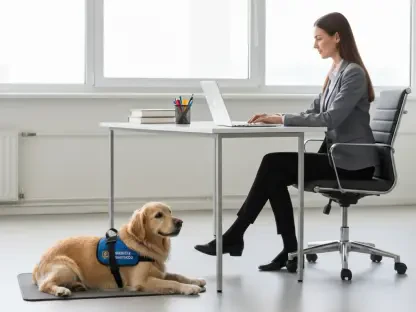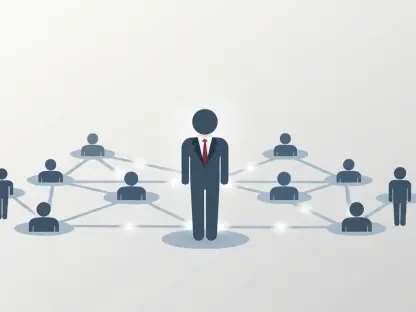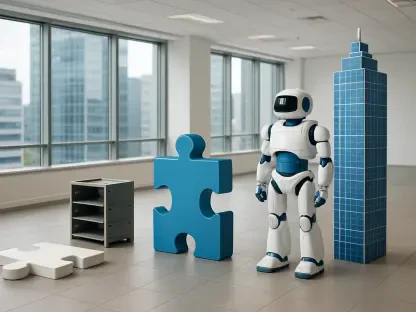How Can Companies Improve Learning with Diverse Training Methods?
In today’s rapidly evolving business environment, companies are continually seeking innovative ways to enhance their Learning and Development (L&D) programs. As the backdrop of the Covid-19 pandemic has shown, a one-size-fits-all approach is increasingly ineffective. Standardized training methods often fail to address the diverse needs and learning styles of employees. This article delves into the challenges of traditional L&D programs and offers a range of strategies to create more effective and engaging training experiences.
The Pitfalls of a One-size-fits-all Training Method
One-size-fits-all training programs are akin to the uniform sizing of Brandy Melville’s clothing; they cater to a narrow audience and neglect the diverse needs of most employees. Despite the efficiency these programs appear to offer, they often lead to poor knowledge retention and skill application. This over-standardization becomes even more glaring in the context of virtual training, which surged during the Covid-19 pandemic. Although necessary, this shift has resulted in an over-reliance on virtual courses, often sidelining crucial hands-on and practical learning aspects.
The shortcomings of these standardized programs are evident as many employees return from training sessions only to find themselves overwhelmed with regular duties. This makes it nearly impossible for them to apply the new skills they’ve learned. Additionally, the lack of personalized training paths means that employees are often forced to engage in modules that are either too advanced or too basic for their current skill levels. This misalignment can lead to disinterest, frustration, and ultimately, a failure to enhance overall competency and productivity within the organization.
The Limits of Micro-credentialing and Self-directed Learning
The increasing emphasis on micro-credentialing and self-directed learning places an undue burden on employees. While these methods offer flexibility, they often isolate learners and remove essential support systems. Carol Kulik, a professor of human resource management, highlights that this trend can hamper effective skill acquisition. When employees are left to navigate their development independently, they may miss out on critical feedback and reinforcement, which are vital for meaningful learning experiences.
Self-directed learning may appear cost-effective initially but can lead to uneven results. Employees often lack the expertise to choose the right training materials or even understand the areas they need to focus on for improvement. Moreover, without a structured framework, the chances of procrastination increase, causing delays in skill acquisition. The lack of peer interaction in such self-directed modes also means less motivation and fewer opportunities for collaborative learning, further diminishing the effectiveness of the training.
The Importance of Creating Safe Learning Environments
Enabling employees to make mistakes without fear of repercussions is crucial for skill retention. Formal training sessions often result in a wealth of information that is subsequently forgotten if not applied practically. Kulik provides an example from a boutique marketing firm, where employees practiced AI skills in a sandbox environment. This approach allowed them to experiment without real-world consequences, thereby reinforcing their training. Creating such safe spaces for practice can significantly enhance the effectiveness of L&D programs.
Providing a safe environment encourages experimentation and innovation. Employees who are free to make mistakes without judgment can explore new approaches and identify more efficient ways to perform tasks. This freedom to fail and learn from failure is essential for fostering a culture of continuous improvement. Sandbox environments can take various forms, from simulated client projects to interactive workshops, each offering invaluable opportunities to practice and cement new skills without the pressure of real-world repercussions.
Valuing In-person Interactions for Tacit Knowledge Exchange
While virtual learning offers convenience, it lacks the depth provided by in-person interactions. These face-to-face sessions facilitate the exchange of tacit knowledge and spontaneous feedback, which are harder to achieve remotely. Christopher Myers, an associate professor at Johns Hopkins Carey Business School, points out that in-office interactions create opportunities for informal learning that virtual platforms struggle to replicate. In-person training sessions and collaborative activities can fill this gap, offering richer learning experiences.
In-person interactions also foster stronger relationships between employees, which can lead to enhanced teamwork and collaboration. The spontaneous, informal conversations that occur in hallways or during lunch breaks often lead to innovative ideas and problem-solving opportunities that structured meetings may not provide. These moments of serendipitous learning are invaluable and contribute to a more engaged and connected workforce. Therefore, while virtual learning has its place, it should not be the sole avenue for employee development.
Structured In-office Time for Specific Activities
A well-managed return to office work can amplify collaborative learning opportunities. Companies like Microsoft have benefited by structuring in-office time specifically for onboarding and team-building activities. Such structured interactions can help new employees integrate better, providing them with essential feedback and support. Without such careful planning, returning to the office may merely replicate the solitary tasks often performed remotely, missing the potential for collaborative learning.
By focusing on collaborative activities, companies can maximize the benefits of in-person interactions. Structured team-building exercises and onboarding sessions can help new hires become part of the company culture more quickly. They provide opportunities for new employees to ask questions, receive immediate feedback, and build relationships with their colleagues. Such sessions can also facilitate the exchange of tacit knowledge, which is often challenging to capture in virtual environments, thereby contributing to a more holistic learning experience.
Leveraging Corporate Offsites for Blended Learning
Corporate offsite events present unique opportunities for blended learning. Programs like Atlassian’s “Intentional Togetherness Gathering” allow teams to convene during critical project phases. These settings foster social learning and problem-solving, offering unstructured time for teams to interact and learn from each other. Offsite gatherings can rejuvenate teams, enabling them to tackle challenges more cohesively and creatively.
These offsite events are not just about learning; they are also about building camaraderie. Away from the usual work environment, employees often feel more relaxed and open to sharing ideas. This leads to richer discussions and deeper insights. The unstructured nature of these gatherings allows for organic learning experiences that can be both impactful and memorable. Moreover, the fresh perspective gained from a change in environment can spur creativity and innovation, making these offsites an invaluable component of a comprehensive L&D strategy.
Virtual Alternatives for Remote Teams
In today’s fast-paced business world, companies are always on the lookout for new ways to improve their Learning and Development (L&D) programs. The Covid-19 pandemic has underscored the limitations of a one-size-fits-all approach. Traditional training methods often miss the mark when it comes to meeting the varied needs and learning styles of employees. This article will explore the shortcomings of conventional L&D programs and present a variety of strategies aimed at creating more effective and engaging training experiences.
The pandemic has reshaped the workplace, making remote work and digital communication the new norm. This shift has challenged organizations to rethink how they deliver training. Standardized programs that once seemed sufficient now appear rigid and out of touch with the real-world challenges employees face. As a result, companies are turning to more adaptive, personalized training solutions. These tailored approaches not only cater to different learning styles but also accommodate the unique circumstances of each employee, making the training more relevant and impactful. By doing so, businesses can foster a more skilled, adaptable, and motivated workforce.









